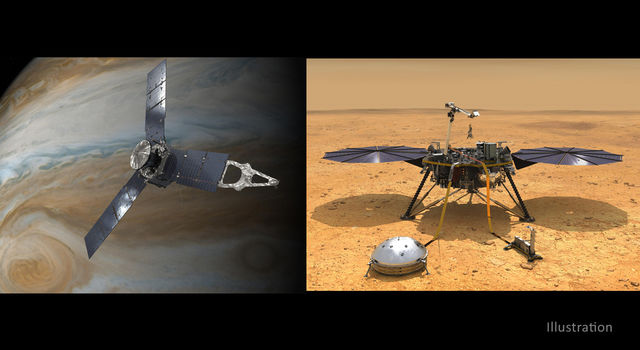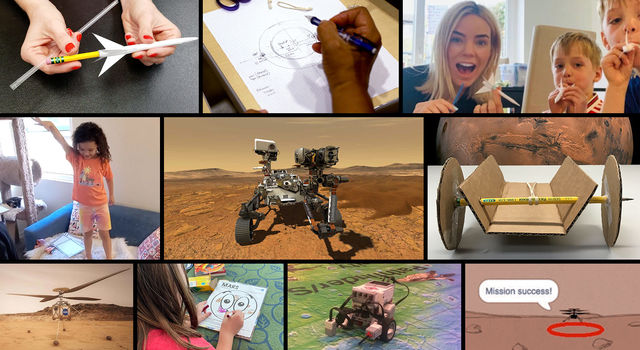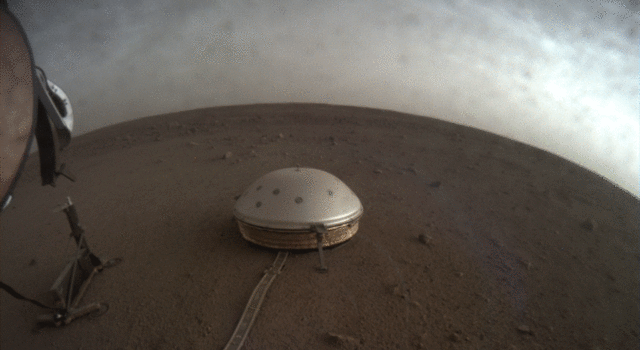Blogs | Dawn Journal | June 2, 2007
June 2, 2007
Dear Dawngineers,
Dawn has been greatly enjoying its stay in the Cape Canaveral area, literally the last place on Earth it will be. Following its arrival in April, the spacecraft and other equipment were unpacked and verified to be in good condition after the long drive from Washington. (Note that “long” is a relative term. Dawn’s space voyage will cover 3.8 million times greater distance and last 3900 times longer.)
The spacecraft has not visited most of the popular sites in its vicinity, but it still has had a very successful stay in the Sunshine State. (Ironically, it has not been exposed to any sunshine there, but it will be see plenty of sunshine at its next destination.)
One of the major accomplishments at Astrotech Space Operations was the successful completion of the final set of comprehensive performance tests (CPTs). It took about two weeks to run these tests on the hardware and software subsystems. Following that, comparison with the results from earlier CPTs verified that the long series of environmental tests and work on the spacecraft did not introduce any unexpected changes that might compromise its operation in space.
The alignment of spacecraft components was verified and finalized, ensuring that antennas, ion thrusters, scientific instruments, and other devices are properly oriented.
The huge solar arrays, the largest used for any NASA interplanetary mission, were reinstalled, and the deployment system was given one final test. The last time the two wings, each the width of a singles tennis court, were attached to the spacecraft was December. Each wing consists of 5 panels, and hinges allow the system to be folded for launch, so the spacecraft can fit comfortably in the rocket’s nose cone (known to engineers and perhaps some otorhinolaryngologists as the “payload fairing”).
The next time the arrays are opened will be when Dawn is in space, where its 11,480 solar cells will provide the spacecraft with electrical power. A battery will power the spacecraft from liftoff until it is able to extend the arrays and point them at the Sun. When it does, the full length of the spacecraft from wing tip to wing tip will be 19.7 meters (almost 65 feet), which is greater than the distance from the pitching mound to home plate on Earth’s major league baseball fields. In response to many inquiries we have received, we should point out that it truly is purely coincidental that Dawn’s arrays span exactly the same size as the famously profound sculpture “Tribute to Coincidence,” a popular site for visitors to the Small Magellanic Cloud.
While some team members have been preparing the spacecraft, others have been working with equal diligence to be ready to operate it during its mission. Many tests have been conducted both with the spacecraft and with simulators to verify that all systems onboard and on the ground are ready.
Mission scenario tests (MSTs) (initiated last autumn) have continued, with the final one on the spacecraft taking place on May 20 in a successful simulation of launch. Others have demonstrated the capabilities needed to diagnose and recover from problems during launch or during interplanetary flight. Some MSTs concentrated on the methods that could be used during the mission if it were necessary to reload software in the central computers, the computers in the scientific instruments, or the computers in the star trackers. Installing new software when a probe is far from Earth has proven to be a vital ingredient in the successes of many missions.
Dawn also passed a series of radio communications tests with MIL-71, the facility at the nearby Kennedy Space Center that mimics all of the essential characteristics of the much larger Deep Space Network (DSN) stations. This work verified that Dawn’s systems are fully compatible with the DSN, which, apart from happy memories and fond thoughts, will provide its only link with distant Earth when it is otherwise isolated in the forbidding depths of interplanetary space.
The Dawn project also has been conducting operational readiness tests. (These are known quite unimaginatively as ORTs; and even less cleverly, the acronym is spoken letter by letter and not pronounced as “ort” might sound. Our readers on icy moons of gas giants certainly will recognize a thought-provoking concept herein, although it likely will escape readers elsewhere.) Some ORTs have used the spacecraft and others have relied on simulators, as the focus is less on the spacecraft and more on the team members and the processes, procedures, software, and hardware (including the selection of snacks in mission control -- kudos to the unofficial but vital mission control nutrition engineer!) they will use during operations. ORTs of launch and some of the activities that will be conducted to check out the spacecraft during its first weeks in space have been completed, and more are planned.
On May 28, Dawn was moved to the Hazardous Propellant Facility at Astrotech where xenon and hydrazine will be loaded. The complex procedures of pumping these propellants into the spacecraft tanks have not begun yet, but relocating the spacecraft allows engineers to make preparations.
As work here on Earth has continued to ready Dawn for its flight, scientists took advantage of a favorable opportunity in May to study the explorer’s first destination, asteroid Vesta. During portions of 7 orbits of Earth, the Hubble Space Telescope observed Vesta, the first of Dawn's two destinations. Even this fantastically capable observatory cannot detect the kind of detail Dawn will find after its 4 year, 3.0 billion kilometer (1.9 billion mile) voyage to Vesta, but the data from Hubble will aid scientists as they plan for Dawn’s detailed observations.
While Dawn may get as close as 200 km (about 120 miles) to Vesta, Earth’s closest distance in many years occurred on May 31, at a range of about 171 million kilometers (106 million miles). Vesta is the only resident of the asteroid belt that occasionally is bright enough to see with naked eyes, although good observing conditions are required. Visit http://dawn.jpl.nasa.gov/feature_stories/Vesta_nightsky.asp to learn more, including how you can spot this intriguing asteroid this month.
Reports from the near future reveal that the next log will include news about the propellant loading and related work as well as the status of Dawn’s rocket and the plans for using it to leave the Sunshine State.
Dr. Marc D. Rayman
June 2, 2007
TAGS:DAWN, VESTA, CERES, DWARF PLANET, MISSION, SPACECRAFT







